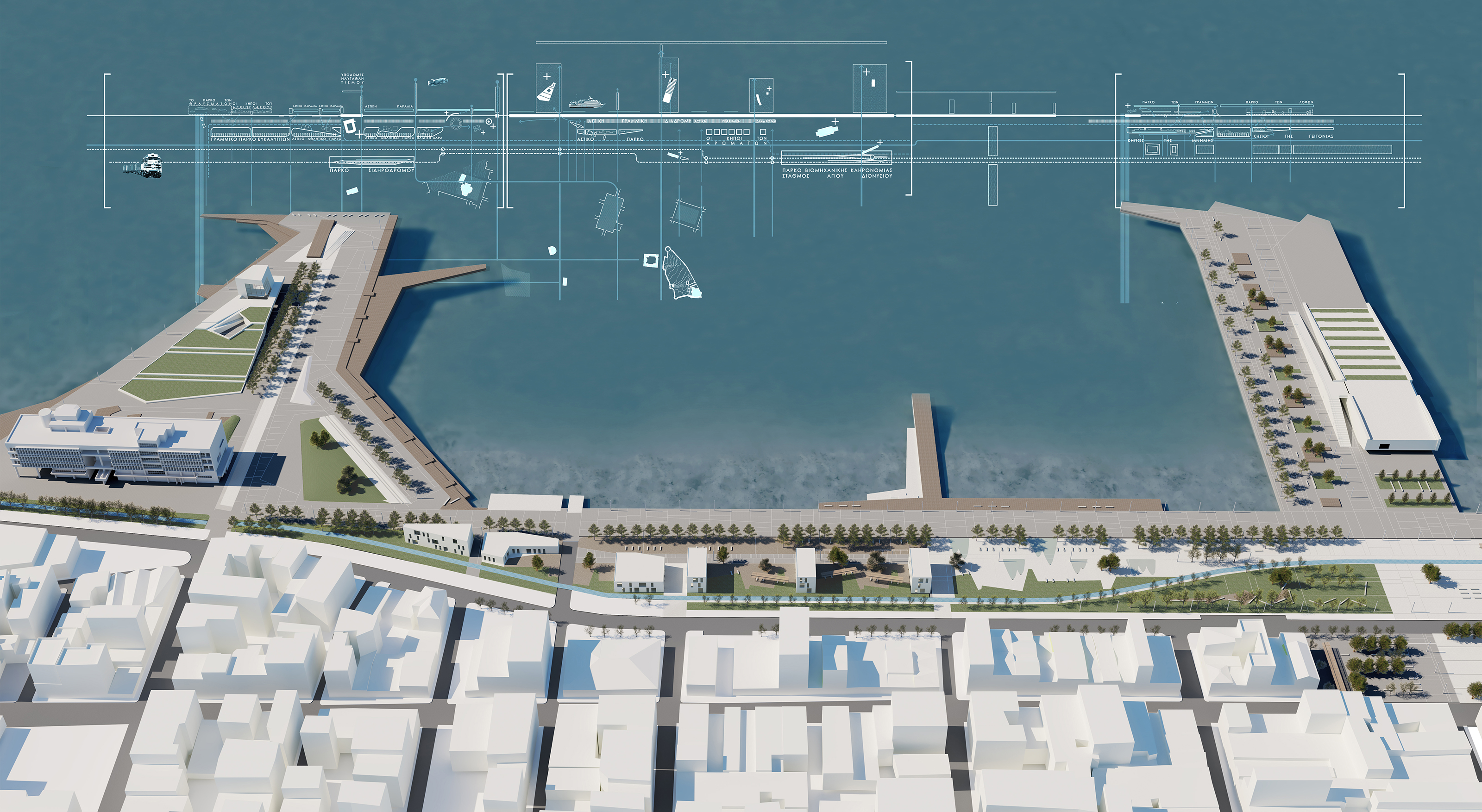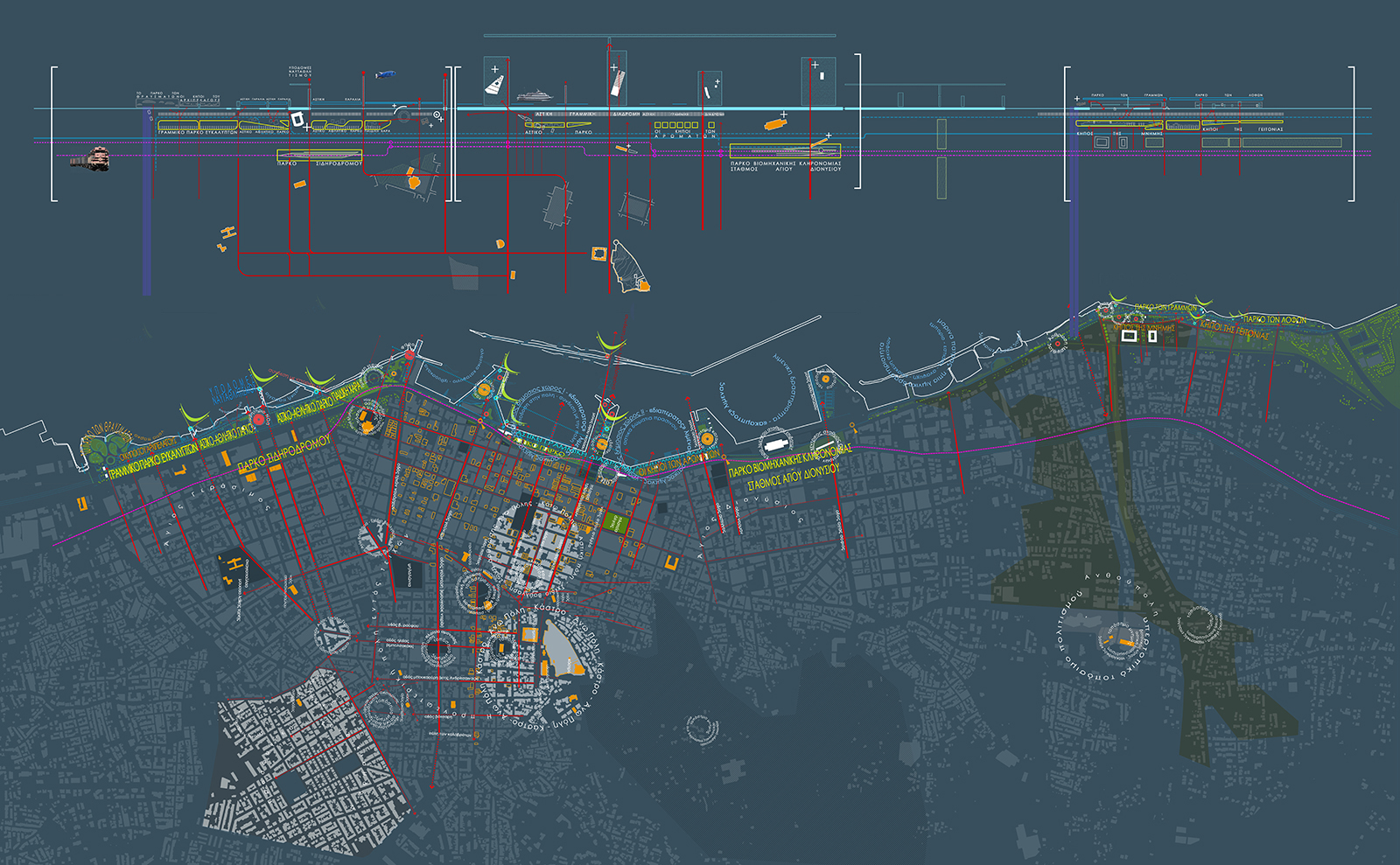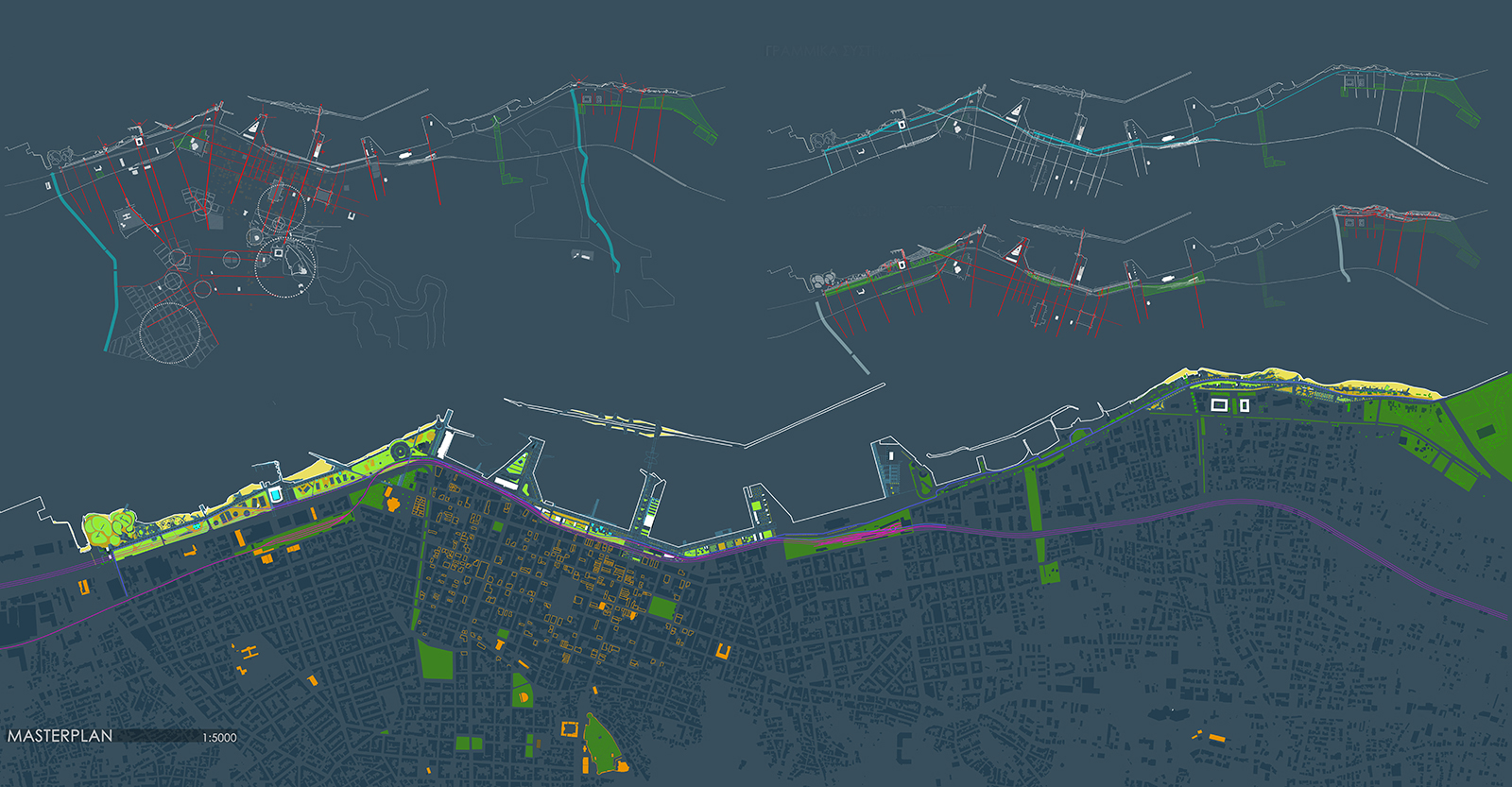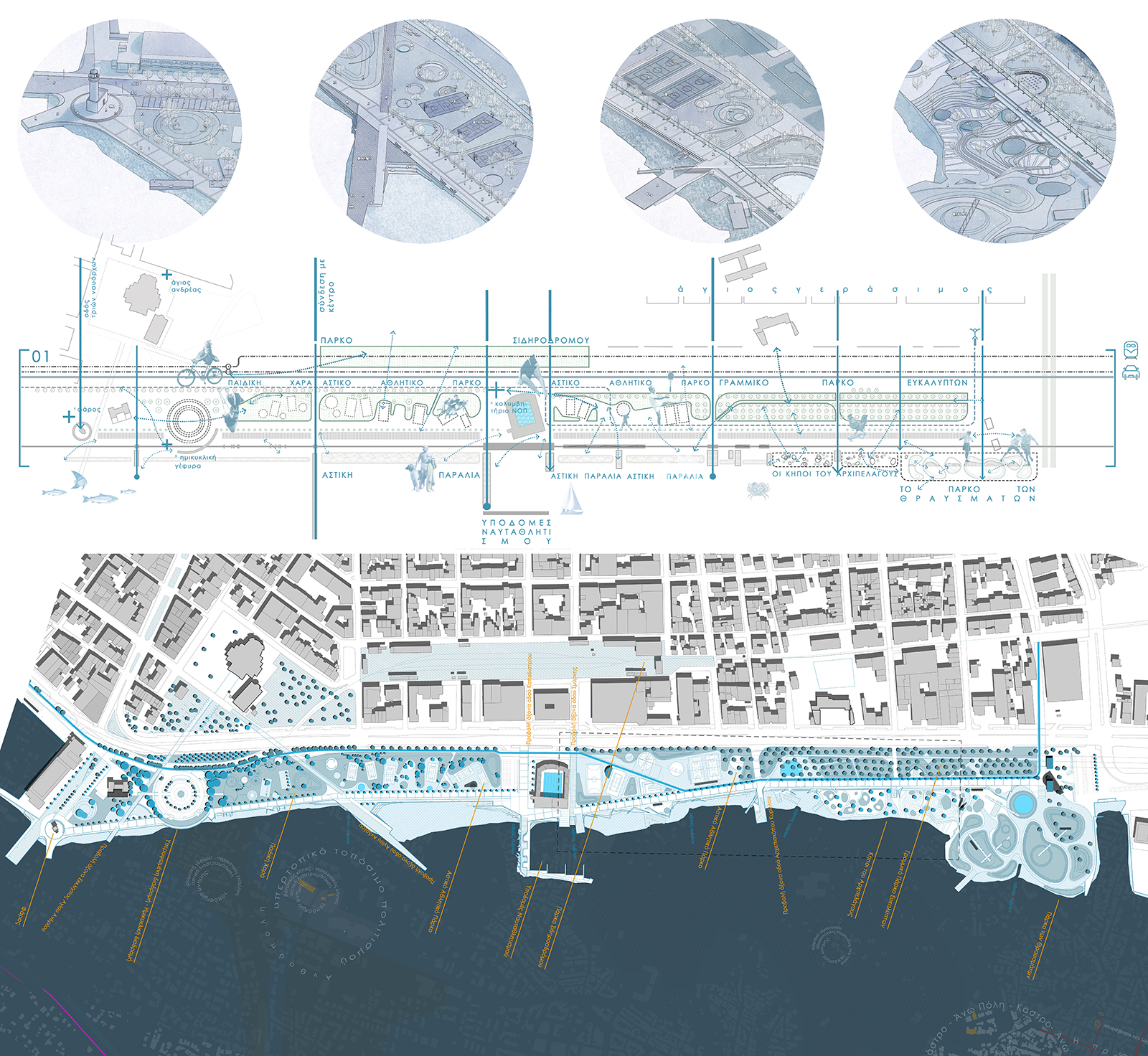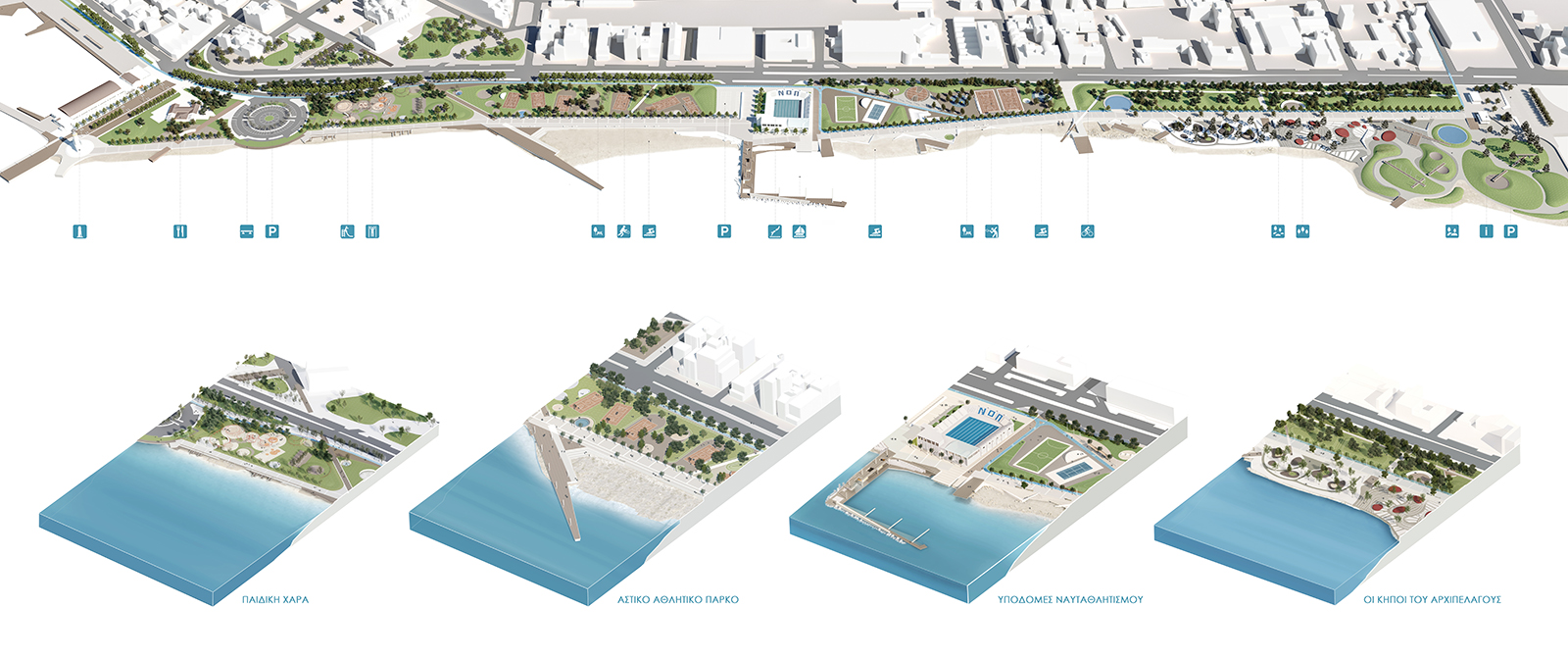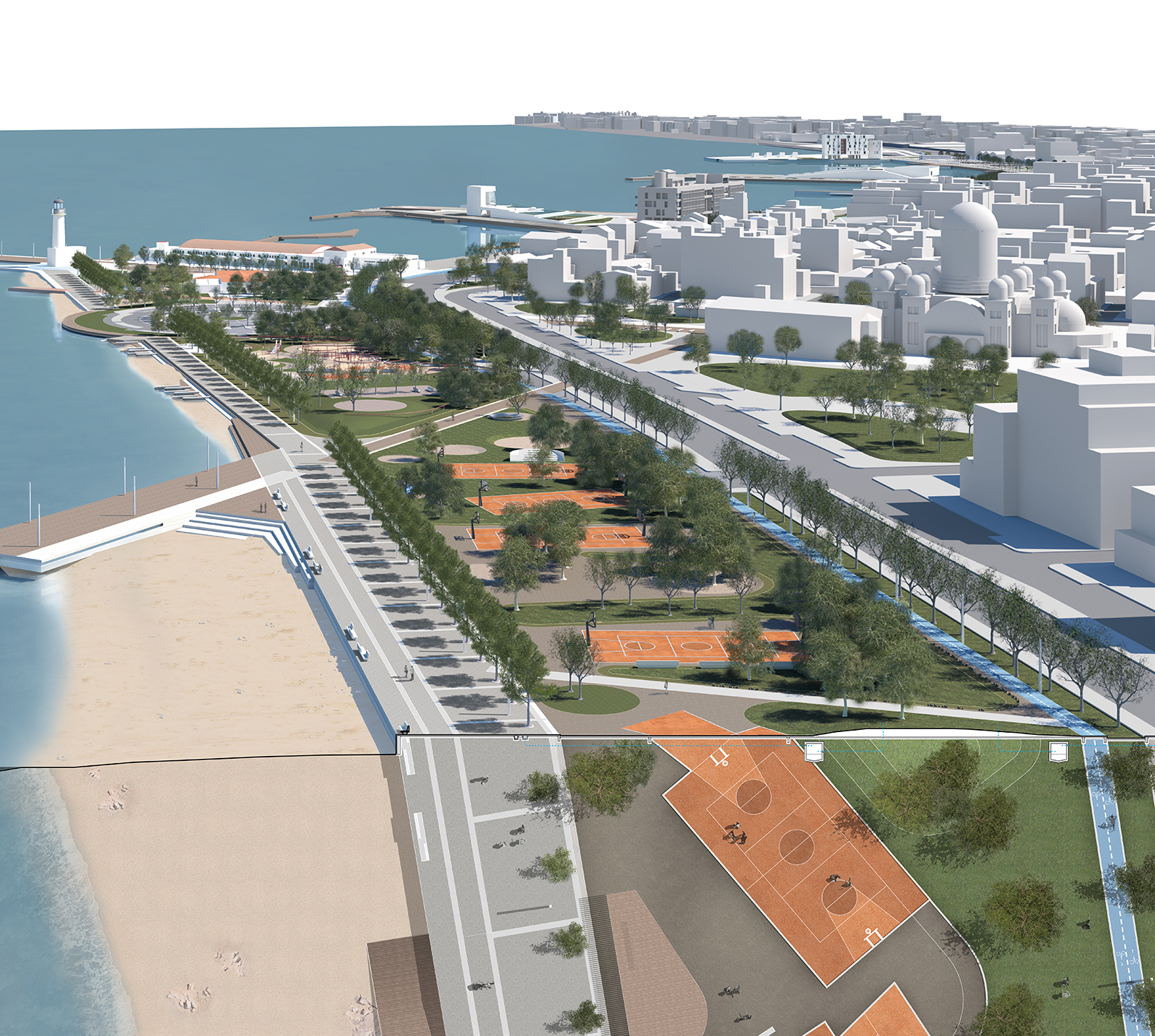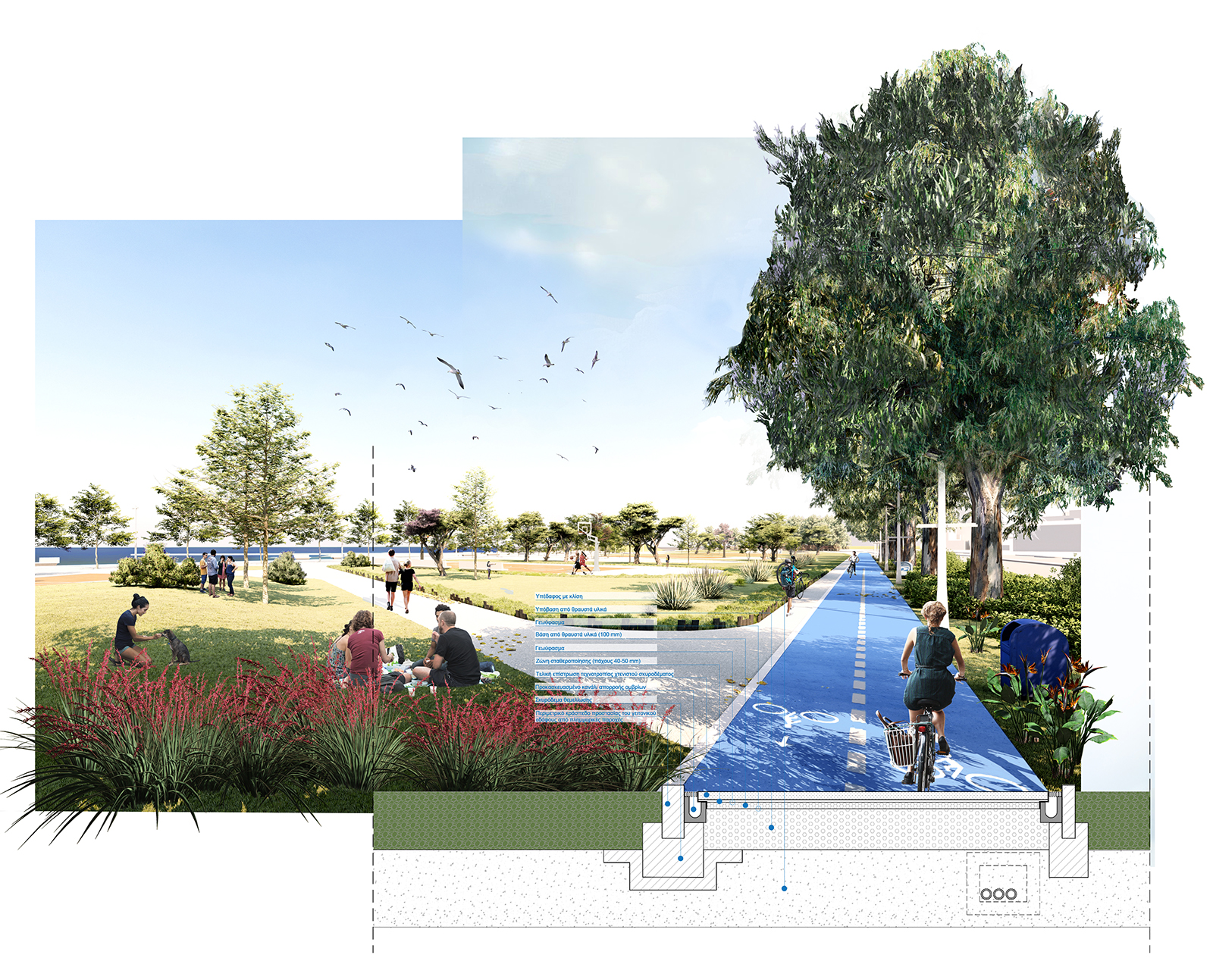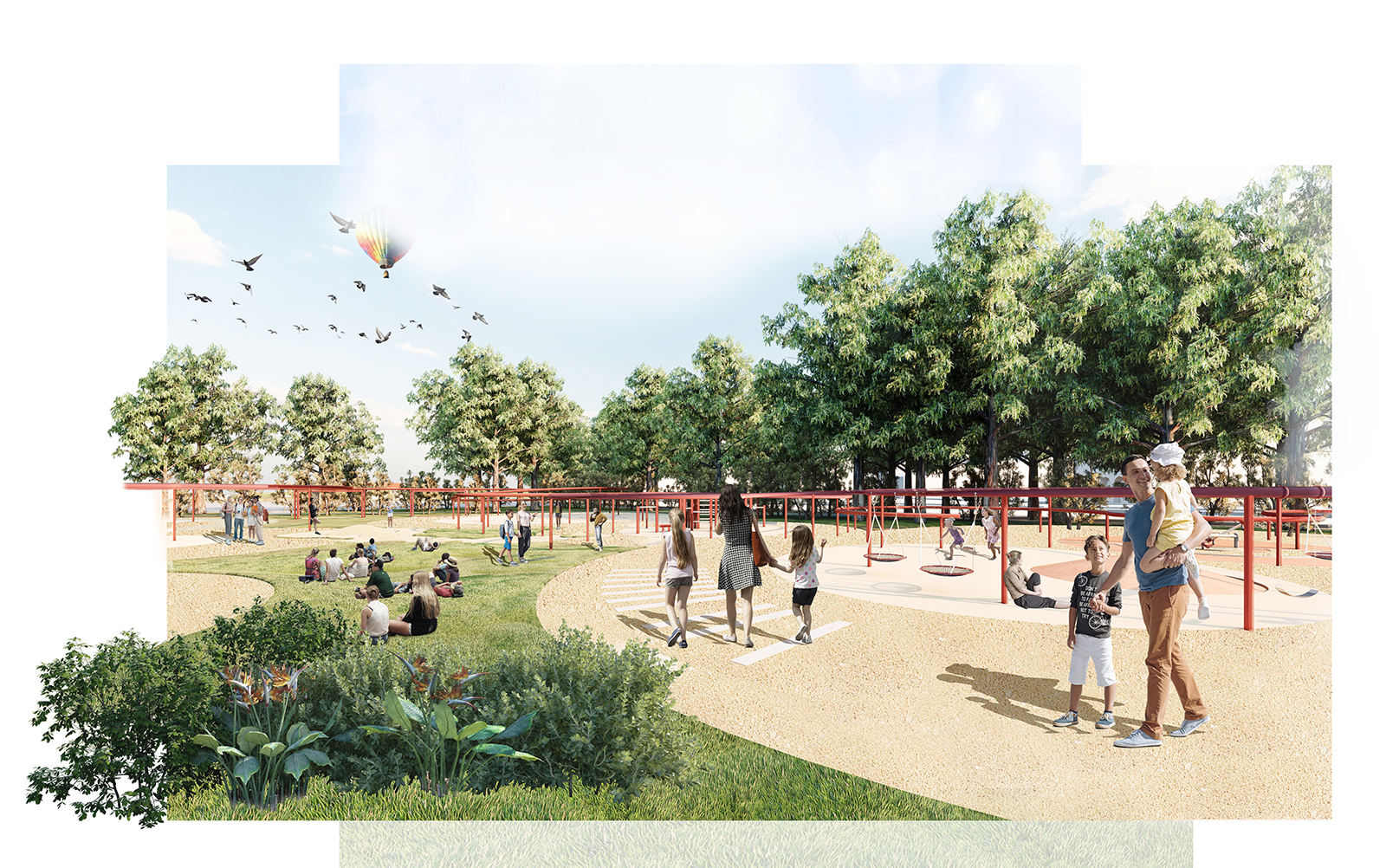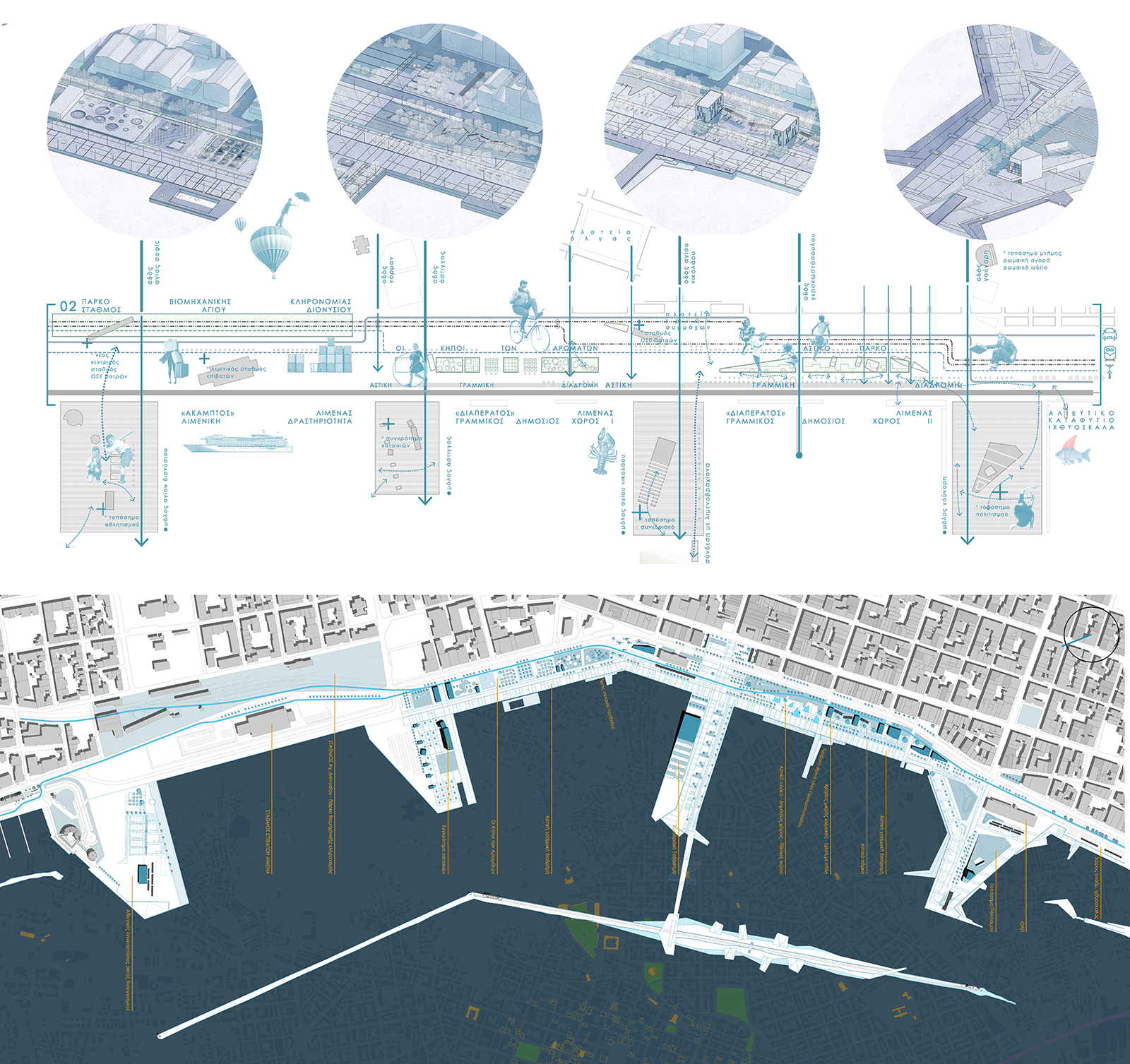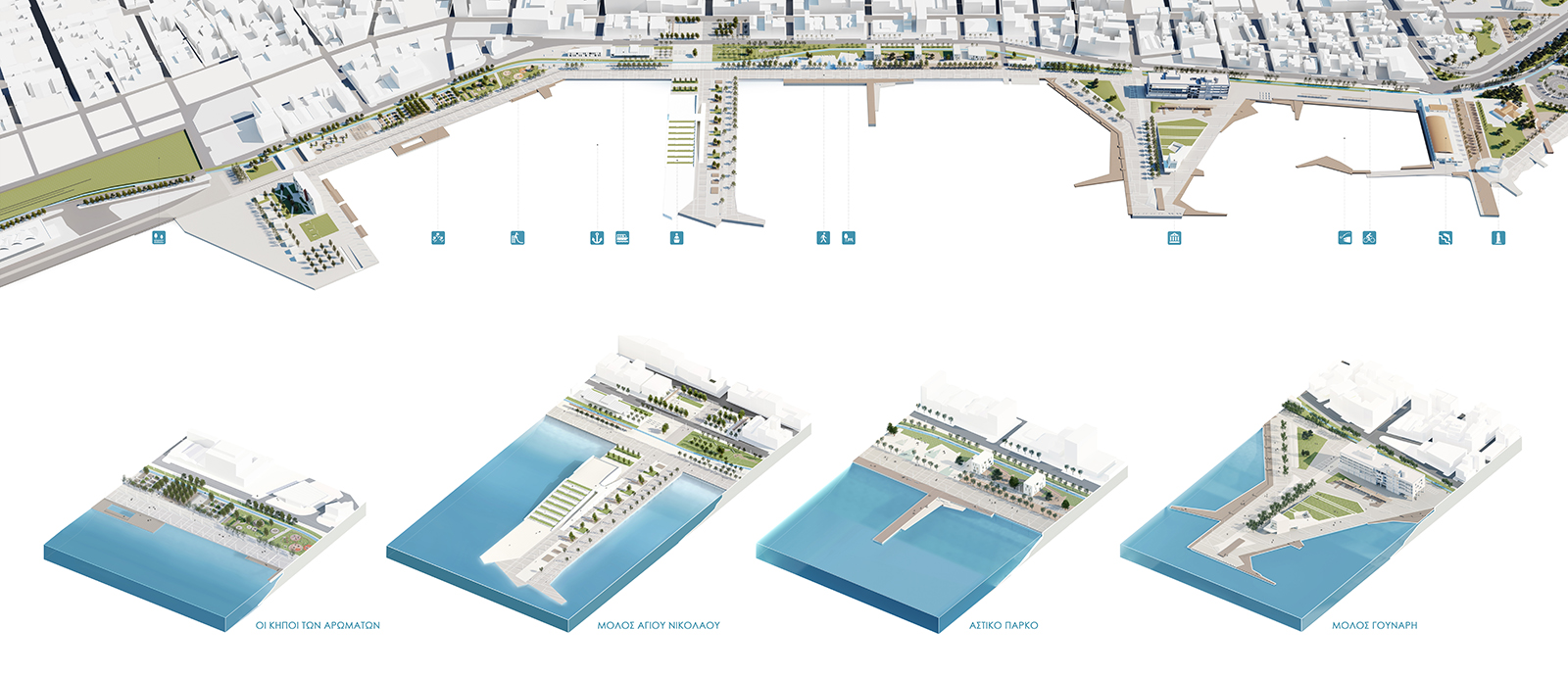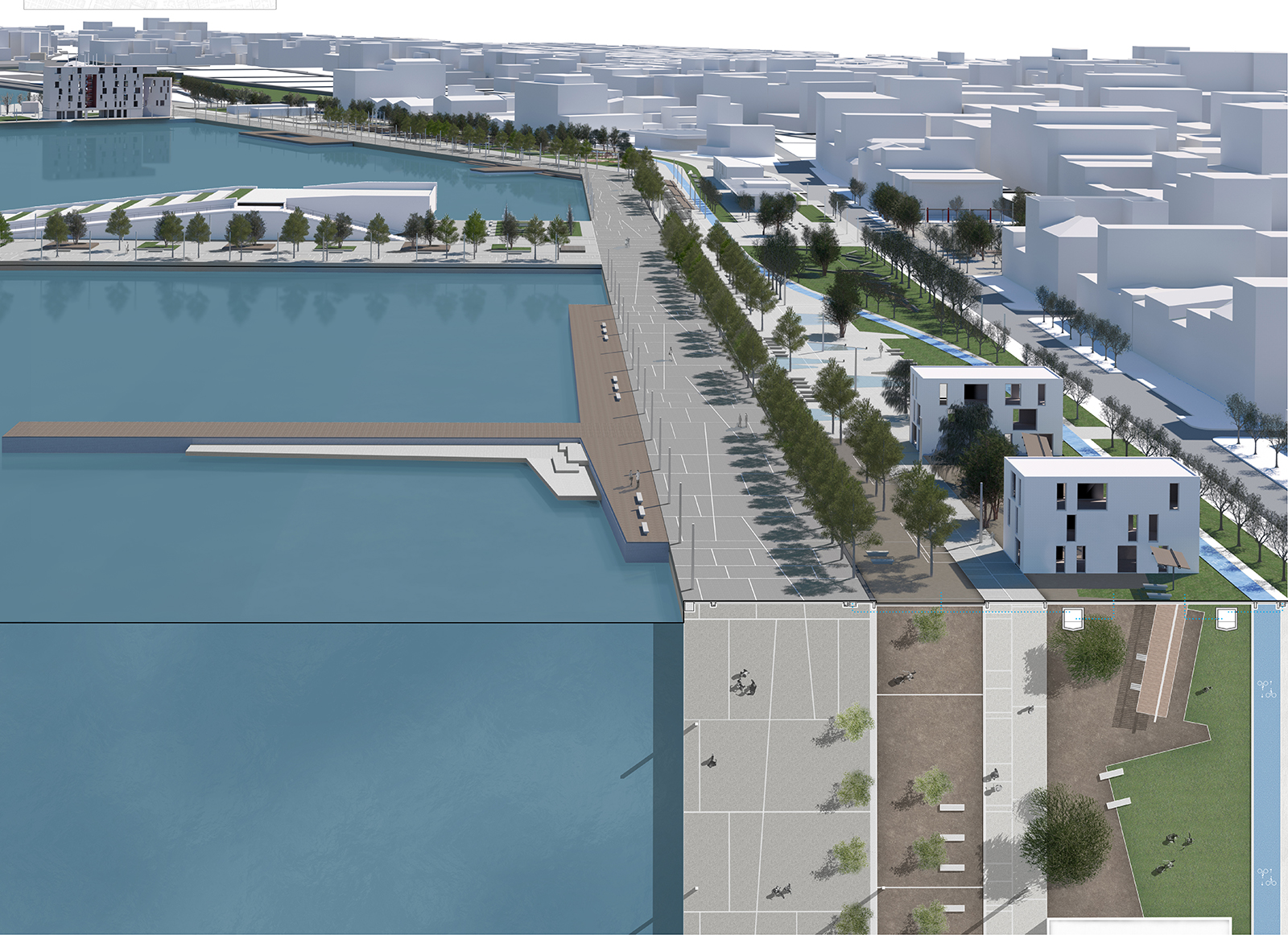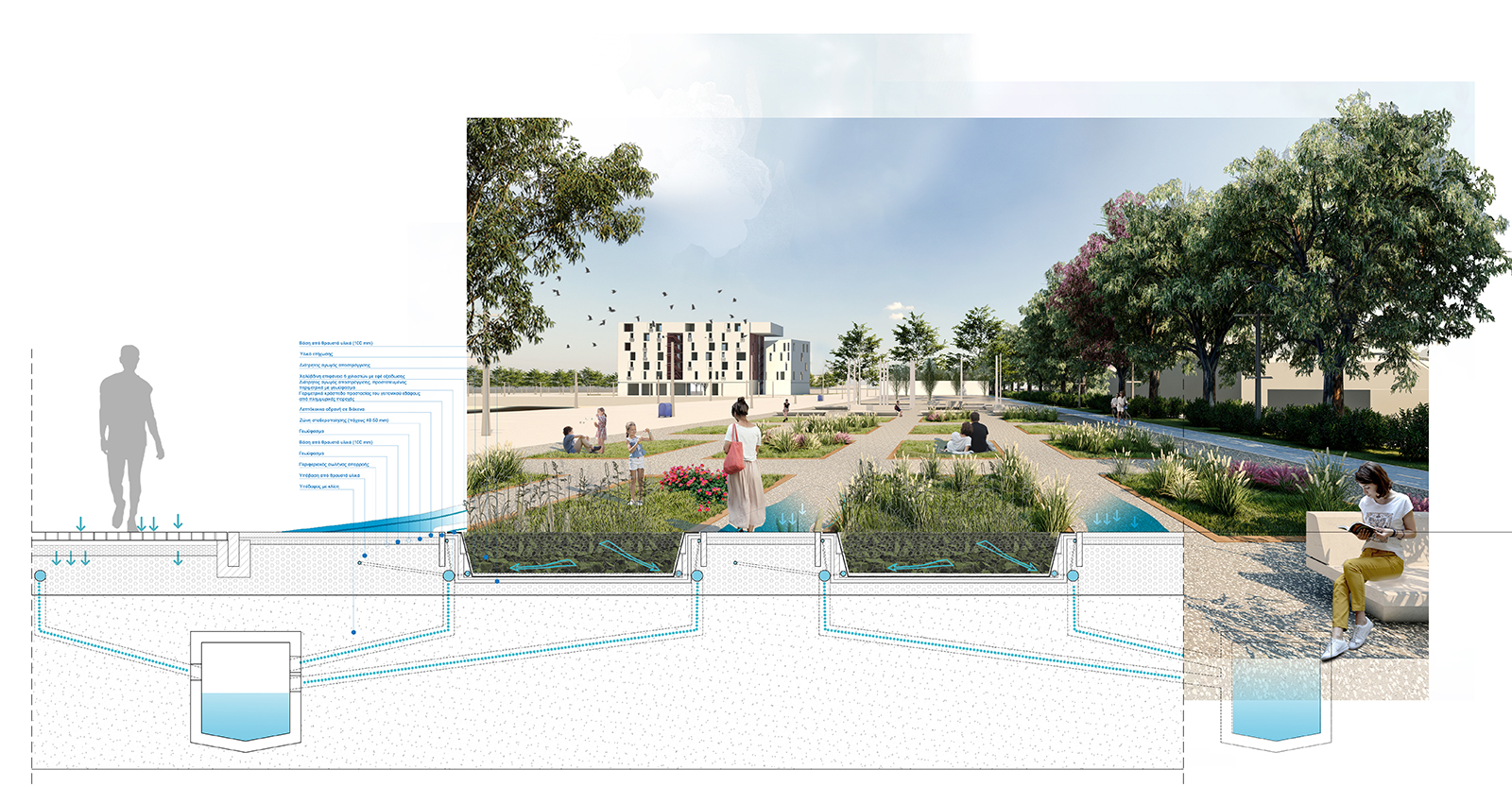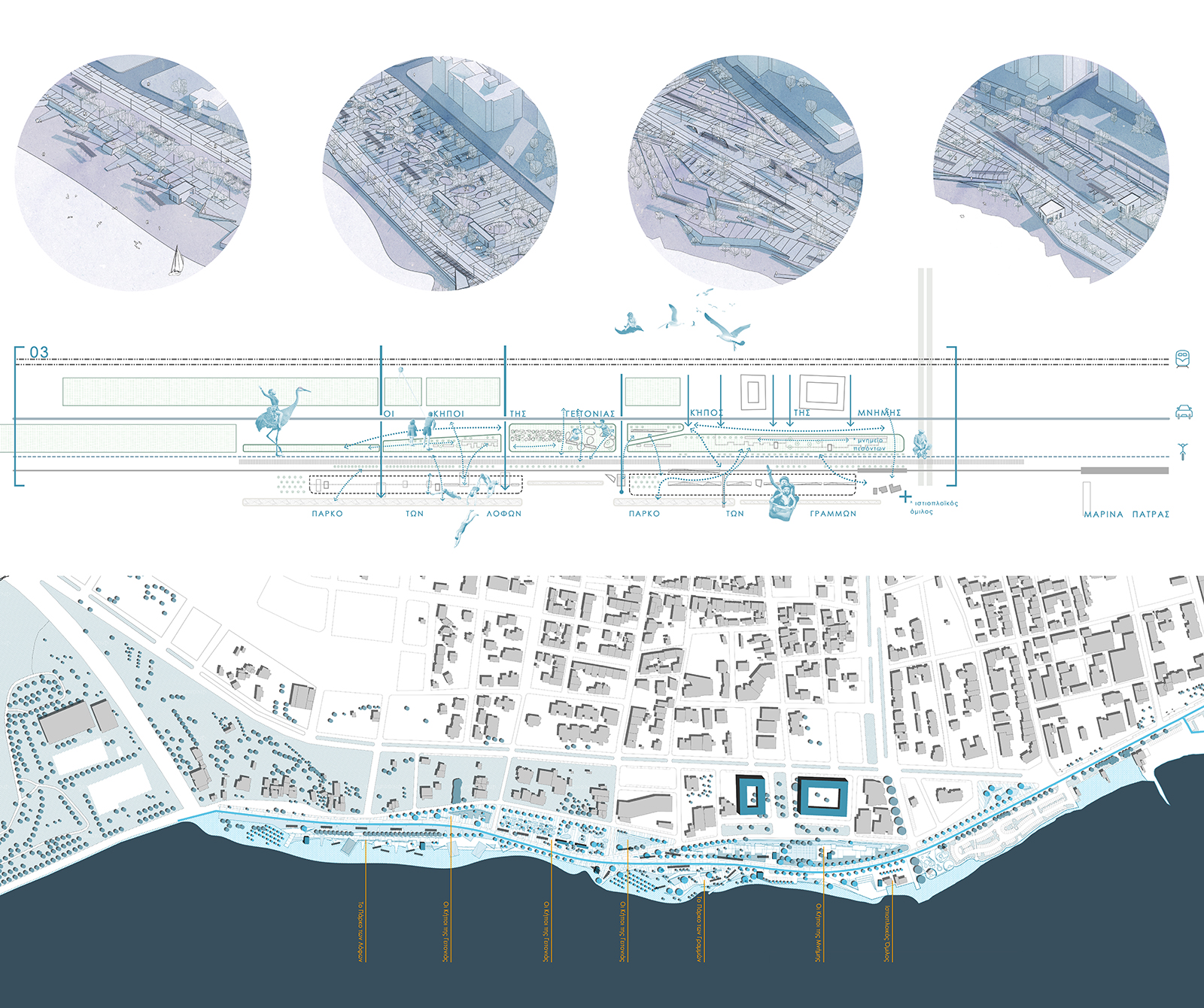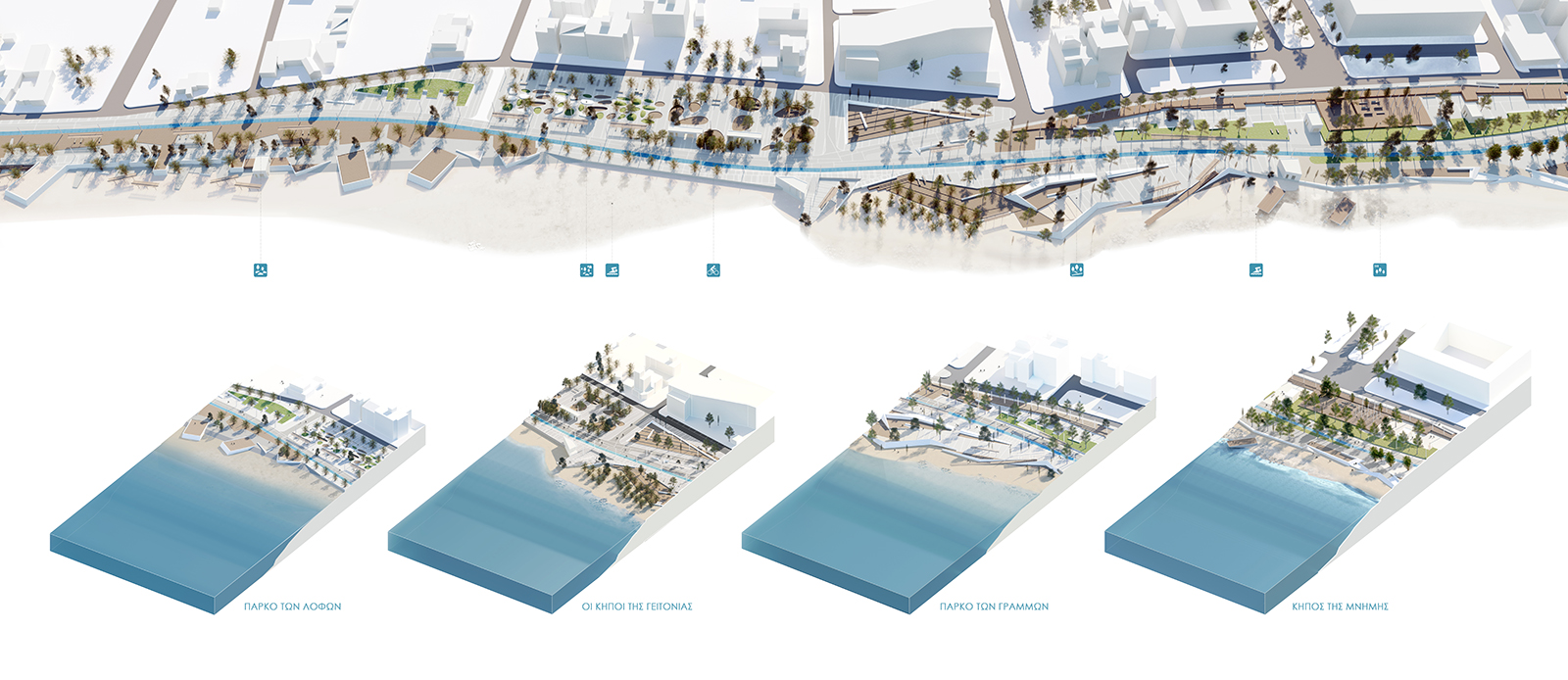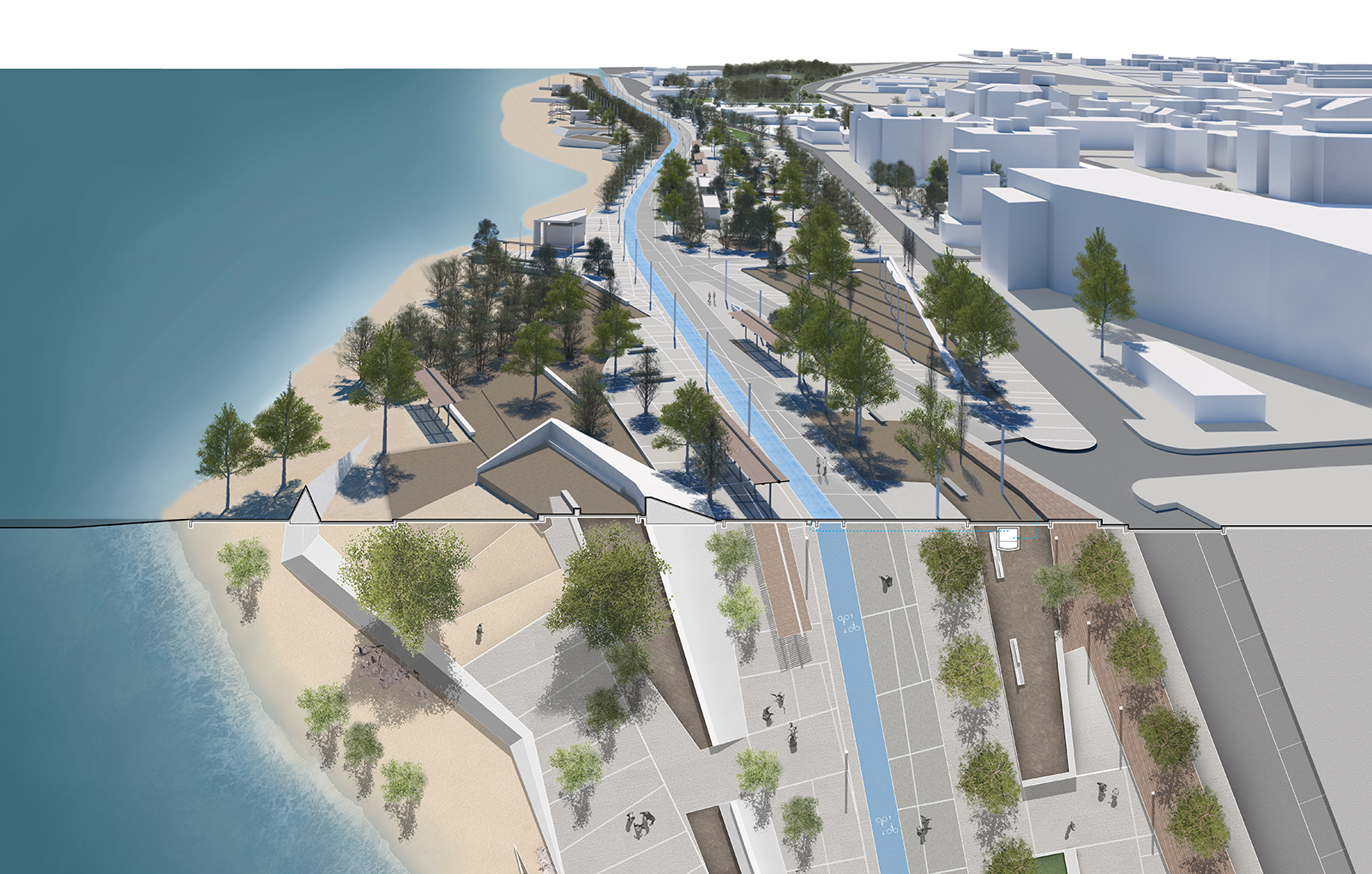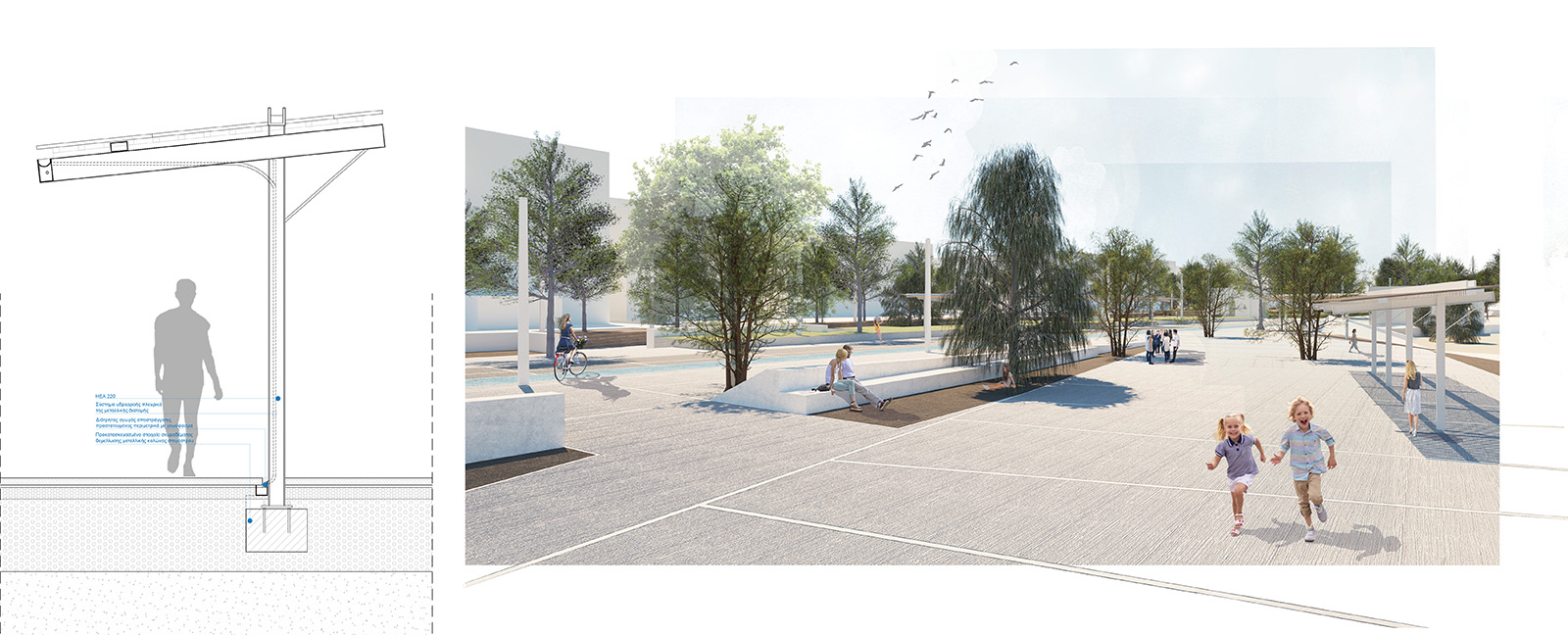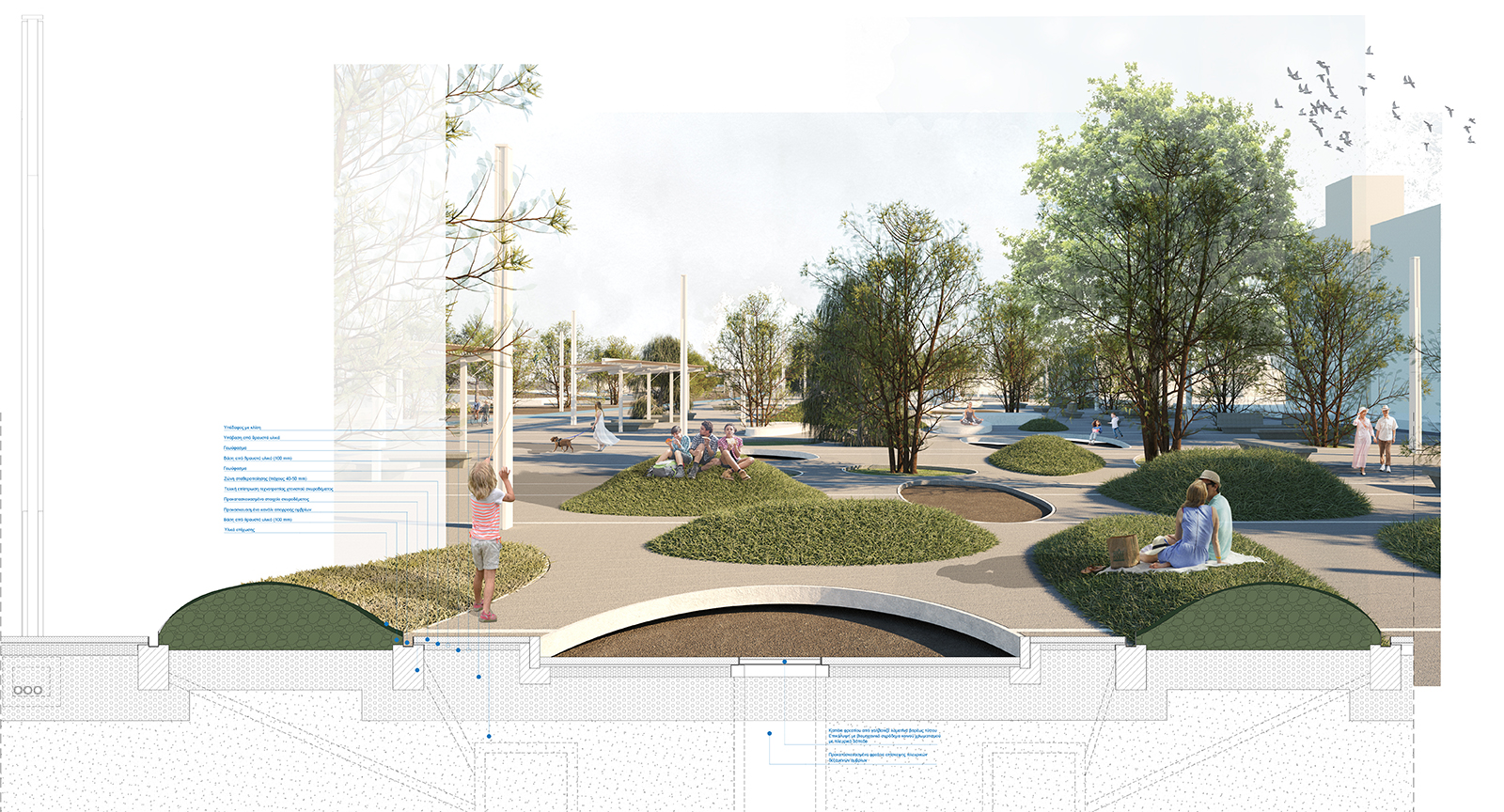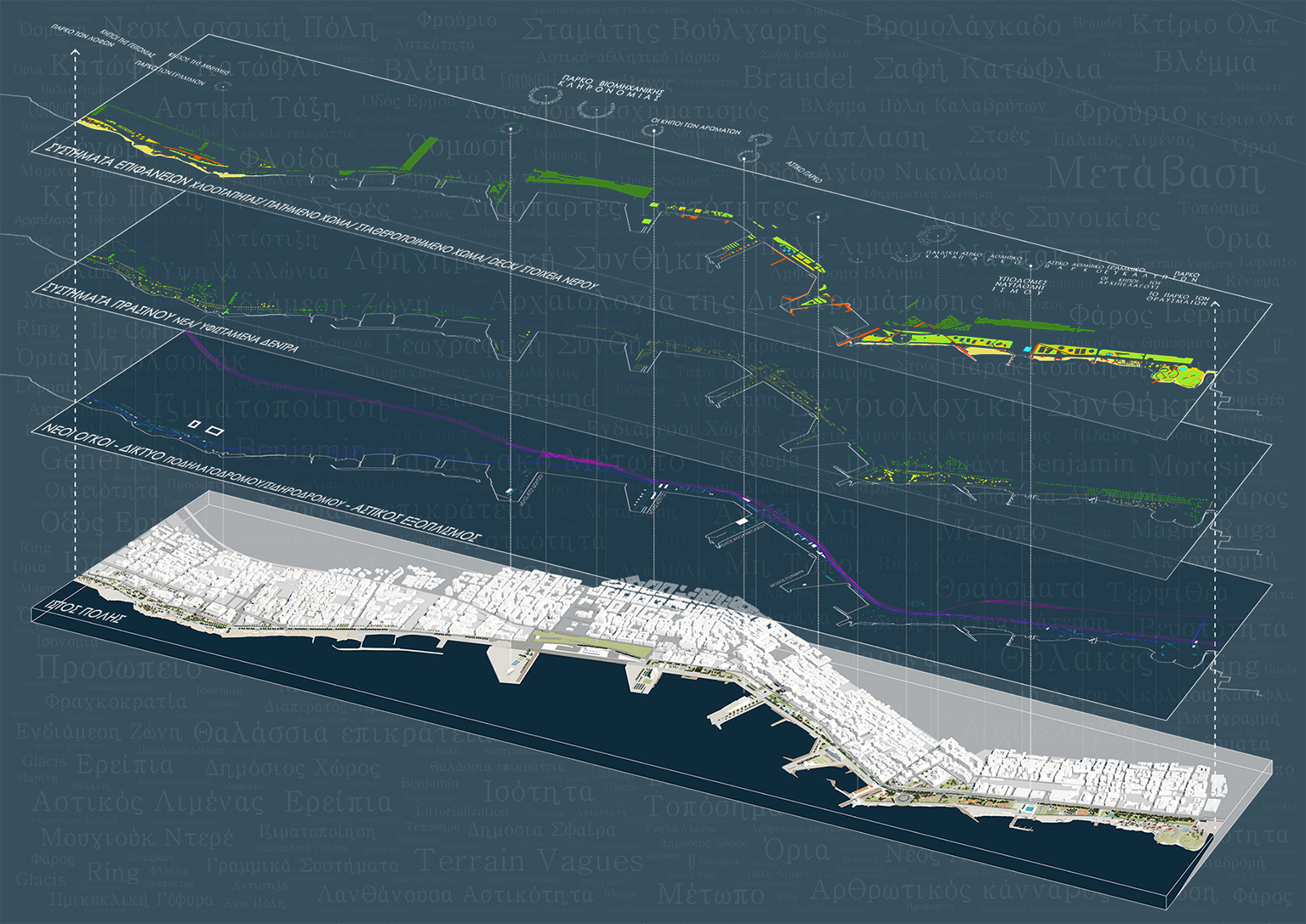Patras Waterfront. Linear Connections, Transversal Crossings
Location: Greece, Patras (Achaia Prefecture)
Description:
English Text Linear connections and transverse crossings The project is based on the interpretation of Patras’ urban morphology dynamics. Their analysis shows that the urban fabric of the city is a field of "enclaves" and "microcosms" which define different urban units, which blur from one into the other. There are no clear boundaries, but zones of transition and osmosis between microcosms. Therefore, the main object of the strategy is the creation of an "interface" between the city and the port as a unifying condition that connects local specificities: -In the "old port" the memory of the city and the need to reformulate the urban identity are called to coexist. This is done through the strengthening of the network of public spaces in combination with the reuse of cultural heritage. The aim is to form new centralities while maintaining the "openness" of the port area without beautification. -In the "Park of the South" and "Terpsithea", the urban fabric becomes weak, forming a condition of low density, suburbanization and therefore low urbanity degree, despite the short distance from the city center. The coastal front becomes an occasion for the creation of urban identity at various scales. In this context, the proposal aims to redefine the whole of an extremely long coastal front, which borders with different urban contexts. "Enclaves" and tissues with a variety of urban characters are called upon to coexist, inter alia, with an "old port", which is not old enough for us to invoke "antiquity" as a value, while, on the contrary, it is obsolete enough to need replacement by a "new" one, with the contradictions and destabilizations that arise, within the urban fabric, from the adaptation of the infrastructure network. Sub-Areas: goals and strategies The "Park of the South" [Area 01] is characterized by a high degree of extra-urban scale. The existing eucalyptus woods come to be a strong recognizable backbone. On the west of this backbone, the connections with the urban tissue define a sort of thematic subdivisions, combining recreational uses, sports facilities, spaces for children. As we approach the shoreline, the scale of the coastal promenade returns, with large areas of green and stabilized soil but also "rough" cobblestone surfaces The "Old Port" [Area 02] is the area where the connection between the city and the port can be achieved through the definition of both urban and local scale. The transversal connections are related to the city not only at the level of local scale, as a projection of the minor urban tissue, but also at the level of the urban scale, through the configuration of [Landmarks], which also redefine the parts of the port they are related with. The "Terpsithea" [Area 03] area is an absolute "Terrain Vague", a place of weak urban relations and correlations. Here it is necessary to configure spaces capable of responding to both the urban and the local scale, through the continuous correlation with the water. The result is the formation of new "urban landscapes" as a consequence of the interrelationship between strategies and places, which put together different aspects of the city-sea dipole. This dipole, therefore, produces conceptual tools through which we can analyze coastal and port space as a framework where the scales constantly refer to each other. The management of the "transition" becomes the main element of the urban strategy, while at the same time it is called to combine issues that regard collective memory and urban form.
Head architect/designer:
Alexios Tzompanakis
Other team members:
1
Alexandros Vazakas Theocharis
2
Alexios Tzompanakis
Company information:
Name: Ma_A-Greece + BMT Studio
Location (Country, City): Greece, Heraklion
Your note:
Here is the five-point rating scale, where 1 means poor and 5 means very good.
